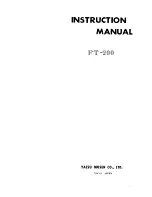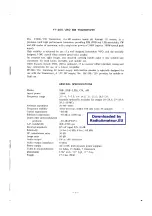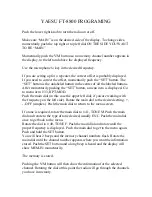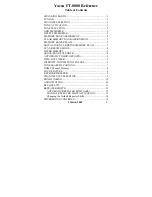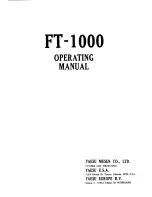
______________________________________________
HARRIS
888-9058-001
WARNING: Disconnect and lockout AC primary power prior to servicing
143
5.5.1.1 Micromodule Interface (Sheet 2)
This sheet is the pin for pin interface between the controller and the micromodule. The
micromodule is a multipurpose card used in various transmitters.
5.5.1.2 Micro Module (Sheet 3)
The control board in the transmitter use the 376 Micro Module. The micro module is a
daughter board with a standardized interface which is plugged into a motherboard. It
contains Flash memory for storage of its programming and SRAM for program
execution. The programming in the flash memory can be re-programmed or upgraded
using In-System Programming or ISP (no hardware needs to be changed) via serial
connection. In general the micro modules are responsible for control, monitoring and
reporting, but have very little to do with transmitter protection which is handled mainly
by the CPLDs.
•
Features of the 376 module include:
a.
Built-in CAN (Controller Area Network) bus controller
b.
16 A/D inputs for analog metering
c.
A serial EEPROM for non-volatile memory storage
d.
A built in clock running at 4.194MHz allowing the micro to run at 16-25MHz
•
Power failure detection
A watchdog which will reset the micro if it is not triggered at least every 1.6
seconds (this time interval will change depending on the application). A discrete
logic device or CPLD is provided on the motherboard to act as an I/O expansion
device and as life support if the micro module fails.
Multiple I/O lines whose direction of signal flow is based on the flash memory
programming. (These could be control or status, inputs or outputs, depending on
the particular use).
The main responsibility of the micro module is control of the CPLD and the
reporting and receiving of information over the CAN bus. This means that the
CPLD will continue to monitor and protect the systems to which it is connected
even if the micro module fails. However, there will be no reporting of information
to the rest of the transmitter system since access to the CAN bus is gone without
the micro module.
5.5.1.3 Development Hardware and Board Version (Sheet 3)
Sheet three shows hardware that is reserved for board development and testing by
Harris engineering. The Assembly Revision is a hardware revision control that uses pull
down zero ohm resistors to allow the hardware revision to be accessed by the
































